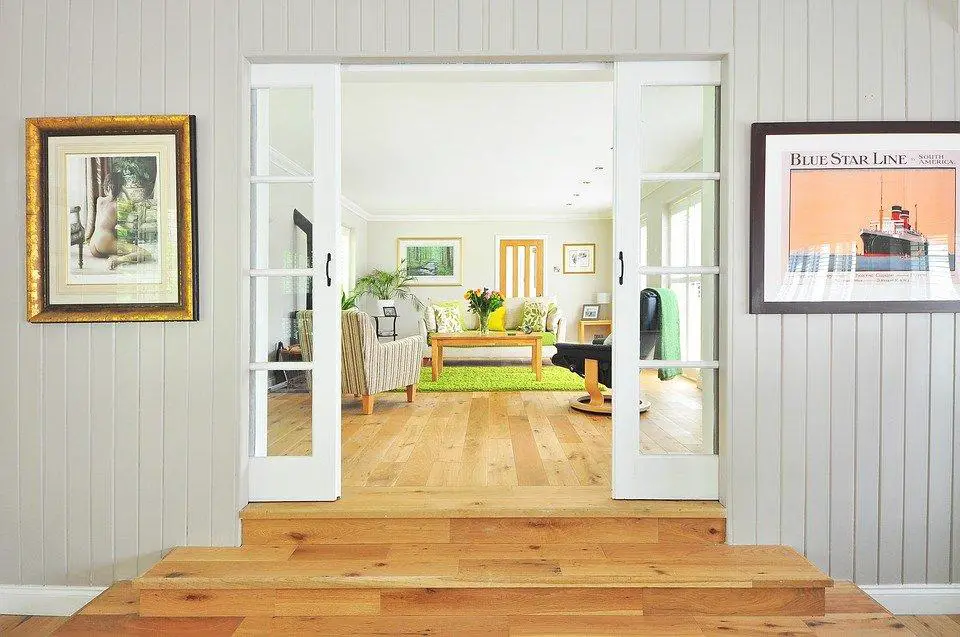Hardwood floors tend to gain scratches, stains and maintain a dull aesthetic the longer they have been in use.
It is possible to refinish hardwood floors and maintain a great aesthetic away from the worn-out flooring that has served years in use.
Hardwood floor refinishing can be affordable and cost-friendly depending on the direction you choose to take. Choosing whether to hire professionals to conduct the refinishing job for you or completing a DIY procedure will help you determine the right course of action.
DIY projects are affordable and cheaper than getting professionals, however complete know-how of the right process of refinishing is important to prevent avoidable mistakes that can set you back and leave a dent on your floor. For instance, prior knowledge of sanding and applying varnish goes a long way in creating an attractive finish.
However, there are some pertinent factors to consider during hardwood floor refinishing:
What To Consider During Hardwood Floor Refinishing?
There are some pertinent factors to consider before embarking on hardwood floor refinishing:
- Type of floor
One of the first steps in refinishing is to determine the type of floor that you have. Various floors vary depending on the finishing type. For instance, some hardwood floors do not comprise of solid hardwood through and through and may hinder the ability to sand or buffer to achieve the right levels of refinishing
Engineered wood floors have a thin layer of hardwood bonded together by plywood and a thin veneer on top. It is important to judge the right amounts of veneer on engineered wood floors to prevent over sanding the floor to expose the hardwood layer. Solid hardwood floors are better suited for refinishing; although an inspection of the plank to make sure there is space for a resurface.
Solid floors can withstand refinishing for up to six years until a new floor is needed. Engineered floors require a minimal and non-invasive technique to avoid wearing thin veneers.
- Type of floor finish
The type of floor finish hugely impacts the likelihood of a successful refinishing. For example, hardwood floors with really thin veneers or machine finishes are unlikely candidates for refinishing.
- The thickness of floorboards
The need to determine the thickness of floorboards will help prevent the floor from falling in. This can be done by looking for a space to observe the floorboards to determine the thickness of the floorboards. This will help determine if the floor is a worthy candidate for refinishing.
The Process Of Hardwood Floor Refinishing
After finding out that your floor needs refinishing, the process begins in the following steps:
- Clean and prepare the floor
Start by cleaning the floor preferably with a hardwood cleaner after removing all the furniture and protruding nails or chips that might hinder the sanding process. Any imperfections on the base of the floor should be identified to note during sanding. It is also advisable to cover electrical outlets and vents with tape to prevent the sand from seeping in and blocking them.
- Sanding process
The main area requires a walk-around sander which enables you to slowly maneuver it around the room. An orbital sander is best suited for DIY projects as it offers control and ease of use. It is best to ask for user instructions before purchase or rent to find out the right parameters with which to operate it with.
The edges of the room will require a smaller sander which is normally handheld and manipulate around the corners. However, you can use a hand sander as well which offers the same results but is tedious and time-consuming. While sanding ensures that all areas are evenly done to prevent bumps afterward. Be sure to vacuum as you go to remove the excess dust. Smooth out the edges and imperfections using a hand sander.
After this, vacuum to remove all the remaining dust and wipe off the remaining dust residue with a microfiber cloth dampened with spirits. It is best to get the right products to prevent chemical reactions with the floor.
- Stain the floor
After the floor area is clean, stain the floor carefully to see that everywhere is accessed. You can stain the edges by choosing a different color from the one before for a different authentic look. For instance, stain finishes are becoming popular due to their anti-slip factor. Contrary to popular belief, dark colors make the dust particles visible, therefore it is best to observe the right stain you would want before application. Colors like beige or grey tones are trending in stain finishes as they give off a luxurious feel.
- Seal the floor
This is done by applying polyurethane to the floor using a handheld roller for easy navigation. Water-based polyurethane will dry quickly but take longer when applying, while an oil-based one will cover better but require a face mask due to possible contamination of fumes.
How To Choose The Right Refinishing Contractor?
If DIY refinishing proves to be a challenge, finding refinishing contractors is the way to go. Several refinishing contractors offer packages from as low as $3 per square foot to do the job. These contractors can be found on online sites where they conduct a site visit and offer recommendations based on the condition of the room.
It is important to read the online reviews and check for contractor verification before accepting a site visit. This helps in proving the authenticity of the contractors and ensuring that credible and competent contractors are the ones to contact.
Checking whether the contractor is licensed and has all the proper certifications is also important. It is important to do a background check on their business address or specifications to confirm viability.
Hardwood floor refinishing is an exciting way to ensure that the hardwood floors give the user longevity and service for a long. With the developing technological trends in hardwood flooring, refinishing them will go a long way in giving the user value for their money.

